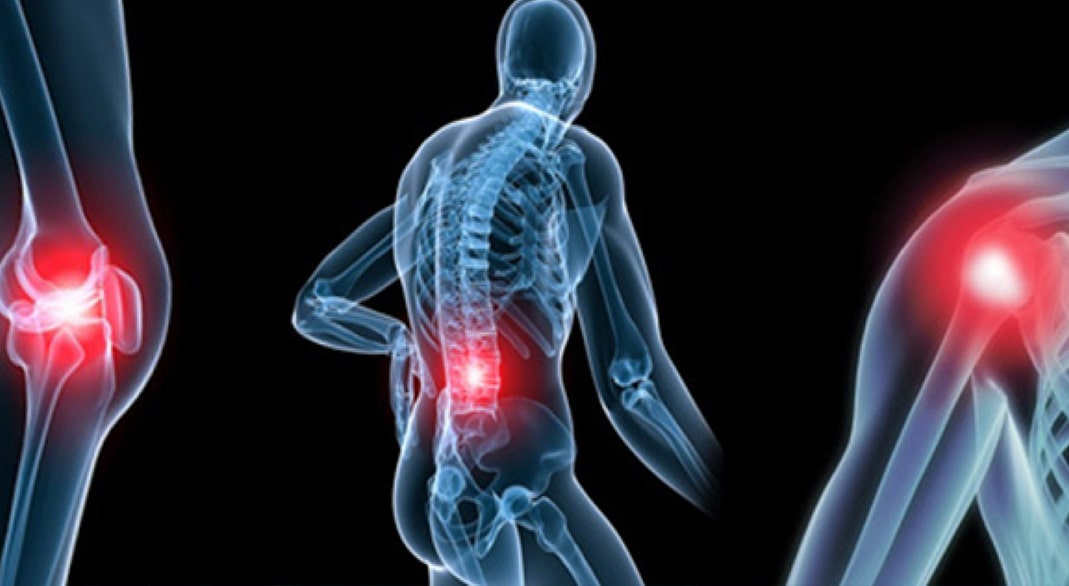Osteoarthritis

I feel pain in my whole body, I feel better after moving, I hear crackling sound from my joints, I have difficulties in ascending and descending stairs, my hands are weaker and I have difficulty in wringing out a cloth. What is happening? Am I growing older? Yes, an inactive society grows older quickly and osteoarthritis has started to be observed in much more individuals.
Osteoarthritis is a disease which leads to deformation on joint cartilage. The bone deforms and protrusions occur on the edge of joint as a result of deformations on the cartilage and bone structure under it. Bones start to contact with each other due to the reduction of intra-articular fluid and this results in damages.
Osteoarthritis is generally observed on spine, hands, hip and knee joint. Hands and knees of women above the age of 55-60 are frequently affected from the disease whereas hips of men are exposed to the same.
Swivels and bony protrusions on joint tips of fingers, pain and seizure on hands in mornings are the symptoms of hand osteoarthritis.
Knee pain, a friction sound due to knee movement, restriction of movement and deformities are observed in knee osteoarthritis. Patients may have difficulties in squatting, ascending and descending stairs and sitting on or standing up from a chair. Swivels may also occur due to fluid.
Hip osteoarthritis involves having difficulties in moving and walking, a feeling of pain when the patient lifts his/her leg up and restriction. Spine osteoarthritis, on the other hand, involves neck, back and/or low back pains, difficulty and sclerosis in movements and pains diffused to leg. Leg pain may be associated with the compression on the nerve going to the leg through this area and canal contraction. These complaints may be confused with the symptoms of spinal and cervical disk hernias.
WHAT IS THE CAUSE OF OSTEOARTHRITIS?
Many risk factors are important in the progress of osteoarthritis. The most common causes are:
- Being a woman
- Increasing age,
- Overweight,
- Inheritance,
- Inactivity,
- Intensive and incorrect exercises,
- Randomly used calcium and osteoporosis drugs,
- Desk jobs or lifting heavy items,
- Rheumatic diseases,
- Thyroid diseases.
HOW IS OSTEOARTHRITIS DIAGNOSED?
Complaints, symptoms, examinational findings and X-ray images are the most useful examinations in osteoarthritis. If joint swelling is observed, some blood tests may be requested. Mr or BT may also be required to find out osteoarthritis related ependymal canal changes.
WHAT SHOULD PATIENTS HAVING DIFFICULTY IN THEIR DAILY LIVES DO? WHAT IS THE RECOMMENDED TREATMENT?
Patients must refer to a physical therapist in musculoskeletal system diseases. Following the evaluation, the therapist will identify the underlying reason of your complaints. The method of using the affected joint precisely must be taught if osteoarthritis exists. The individuals with knee osteoarthritis should avoid of any positions that overload their knees such as not sitting on a low chair or sitting by bending their knees.
The treatment must be planned according to the requirements and lifestyle to reduce pain and move more flexibly. The treatment of osteoarthritis starts with making some changes in daily life to protect the joint. If you are overweight, losing weight will assist in the treatment process as it will reduce the loan on your joint.
Orally or locally administered drugs and various physiotherapy methods are used to recover pain. It is important to ensure tissue recovery and reduce the loan on the joint by strengthening muscles and connective tissues.
Joint lubricating fluid is used to minimize damages and complaints resulting from bone friction as the synovial fluid reduces in case of osteoarthritis.
Successful results are achieved with PRP method which is employed to ensure tissue renewal particularly in the knee joint. If required, PRP and synovial fluid are combined.
Orally administered MSM, chondroitin sulphate, collagen hydroxylate and glucosamine are the most known and commonly used cartilage protective substances. There are many studies showing that these substances have a protective and repairing effect on cartilage particularly in knee, hip, wrist and ankle joint diseases appearing in the course of ageing. However, they must be used under the supervision of a doctor. Especially glucosamine and chondroitin may lead to bleeding by interacting with some anticoagulant drugs or the substances with sodium addition may trigger blood pressure and heart problems.
Early age osteoarthritis cases have increased due to technological developments and immobility. The studies with such treatment methods that are intended for the prevention of osteoarthritis before the joints are damaged have made a quick progress upon the extension of average lifetime.
If intraarticular narrowing further progressed and cartilage/bone damage is high at advanced levels of osteoarthritis, surgical methods should be referred to.
Please note that:
Osteoarthritis may reduce your quality of life due to pain and seizure; however, there are some ways to struggle with the disease.
Administration of drugs under the recommendation of your doctor and performance of suitable exercises will maximize the success of the treatment.
Request information from your doctor in terms of the most appropriate treatment option for you such as drugs, FTR, joint injections and surgical approaches.
